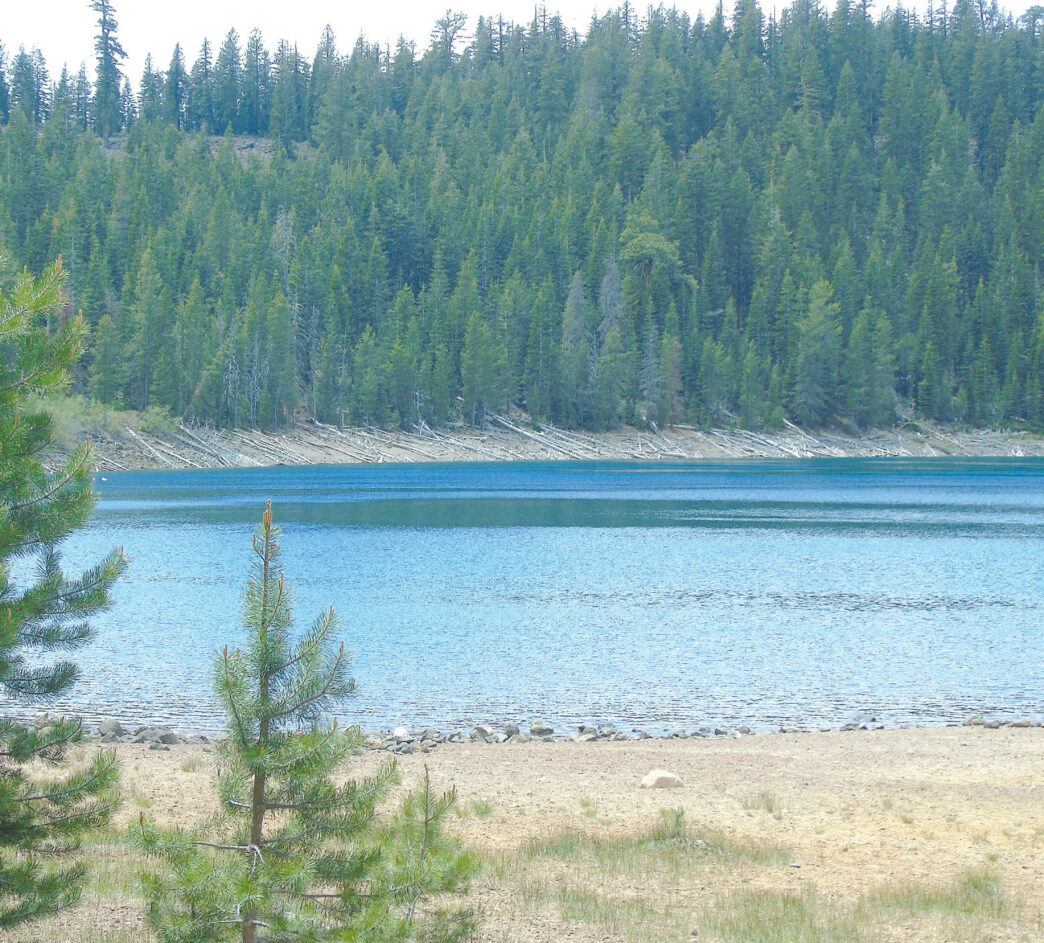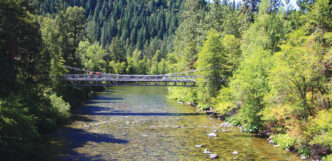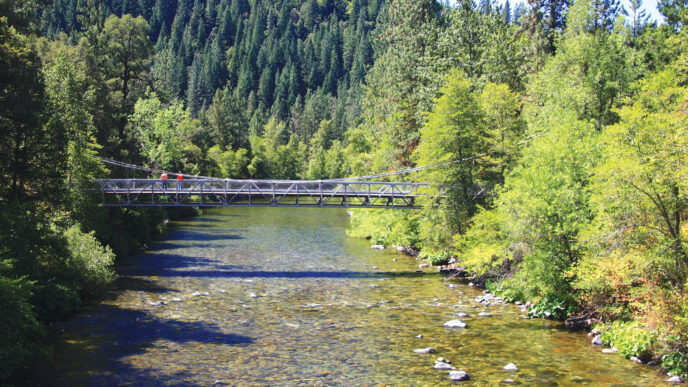Mention Crater Lake, and everyone immediately knows what you are referring to: the most beautiful lake in the world, which is located in a national park in Oregon. But this article is not about that lake. It is about California’s Crater Lake, which sits off Highway 44 in the Lassen National Forest near the Bogard rest area between the towns of Old Station to the west and Susanville to the east.
My wife and I travel this route often. The roadside sign on a side road reading “Crater Lake — 8 miles” always looked intriguing. Two reports also lingered in my mind. One was that the Shasta-Trinity Fly Fishers club schedules outings there. And the second came from a couple of kayakers who spoke of the lake’s crystal-clear water. On a Sunday afternoon this past May, I finally paid a visit to this lake, packing along my peddle kayak.
Crater Lake is reached mainly on an uphill dirt road. With an elevation gain of perhaps a thousand feet from Highway 44, the lake sits at around 7,000 feet. A small campground greets the visitor. Like its Oregon counterpart, this Crater Lake is also clear and bluish. It is slightly smaller than Manzanita Lake, which is about one hour away in nearby Lassen Volcanic National Park. But it is big enough to make a fly fisher in a float tube do a lot of kicking. I was glad to have brought my kayak.
When I launched, the lake teemed with feeding trout, mainly on the surface. My small black wet fly brought hit after hit. These were mainly, if not exclusively, hatchery rainbows. Most were on the small side, even for planters. The biggest was a fat 12-incher.
In most of my lake-fishing experiences, in the June Lake Loop, for example, I usually have trouble getting planted trout to hit my fly. In the meantime, anglers using Power Bait are hauling them in all around me, even young kids fishing off a dock, much to my embarrassment as I doggedly cast a fly to fulfill my wife’s dinner request. So it was a treat to have these Crater Lake rainbows repeatedly strike my fly. In less than two hours, I brought to the net about a dozen and lost at least that many.
Crater Lake is a pretty lake, accentuated by its clarity and sky-blue hue. In a region notable for volcanic activity, this lake was indeed once a crater, now filled with water, the same as with its more famous namesake in Oregon.
After this first visit to Crater Lake, I gathered some more information. From the California Department of Fish and Wildlife official responsible for this region, I learned that the lake is approximately 25 to 30 surface acres in size and has a maximum depth of 78 feet.
The average depth is 42 feet, with about 50 percent of the lake being over 50 feet deep. So this lake is much, much deeper than Manzanita.
Since Crater Lake reportedly receives heavy fishing pressure during the summer and autumn, it is planted heavily throughout the season with Eagle Lake rainbows, both fingerlings and catchables. The objective is to have the fingerlings grow and carry over to the next season, which, given the lake’s depth, is possible. This probably explains why many of the fish I was hooking in my May visit were on the smallish side.
The lake used to have a large population of crayfish, which the trout consumed, growing larger as a result, and there remains the possibility of hooking a lunker. The crayfish, however, have since been depleted.
I also checked with a fly fisher who fishes this part of California extensively, including Crater Lake. I asked him what is it about this lake that brings him there. He responded that it’s a place to hook a lot of fish. Plus, because there seems so little food in the lake (unlike Manzanita), the fish feed aggressively on the surface for any insects that land there. He said that he once witnessed fish trying to get at butterflies that came anywhere near the water. So a fly fisher can fish with dry flies on the top and expect to get many hookups.
He also said, “I fish Crater Lake because of its beauty. When the aspens turn in the fall, it’s a particularly special place to visit and cast to rising fish. It’s a great lake for a fly fisher to fish from a float tube or pontoon boat.”
If You Go…
Crater Lake has a 17-site, first-come, first-served campground that usually opens on May 15 and closes on October 31. Campground fees as of last year were $10 per night, which drops to $5 if you have an interagency pass. Campsite water is hand-pumped, and there is a vault-tank restroom. Because the road to the lake is steep and rough, the U.S. Forest Services advises against bringing motor homes and large trailers to the lake. Also, gas motors are not allowed on the lake.
— Bob Madgic















